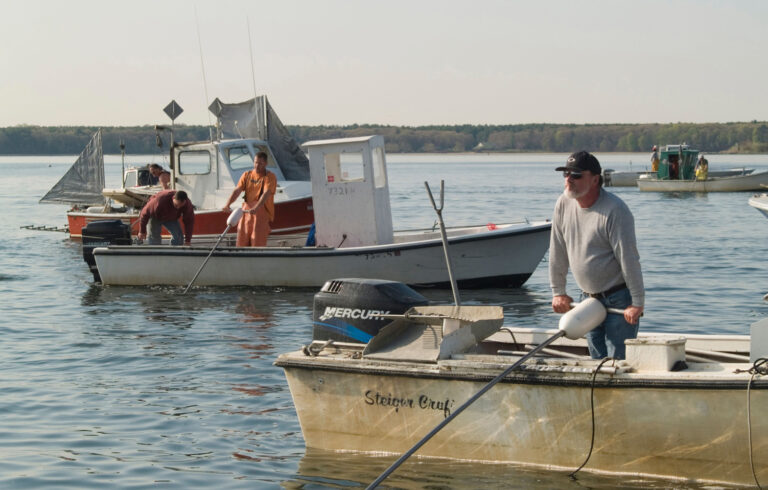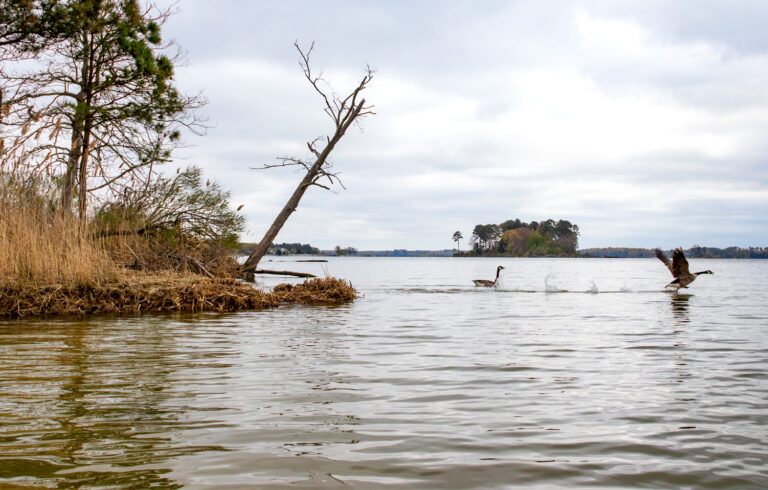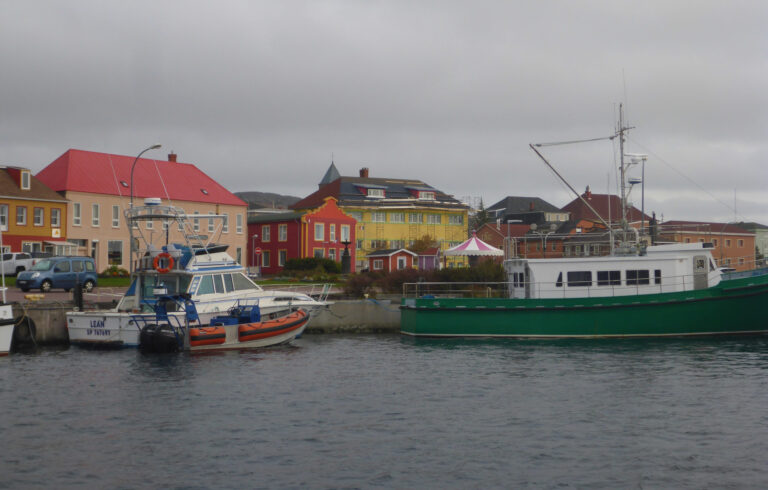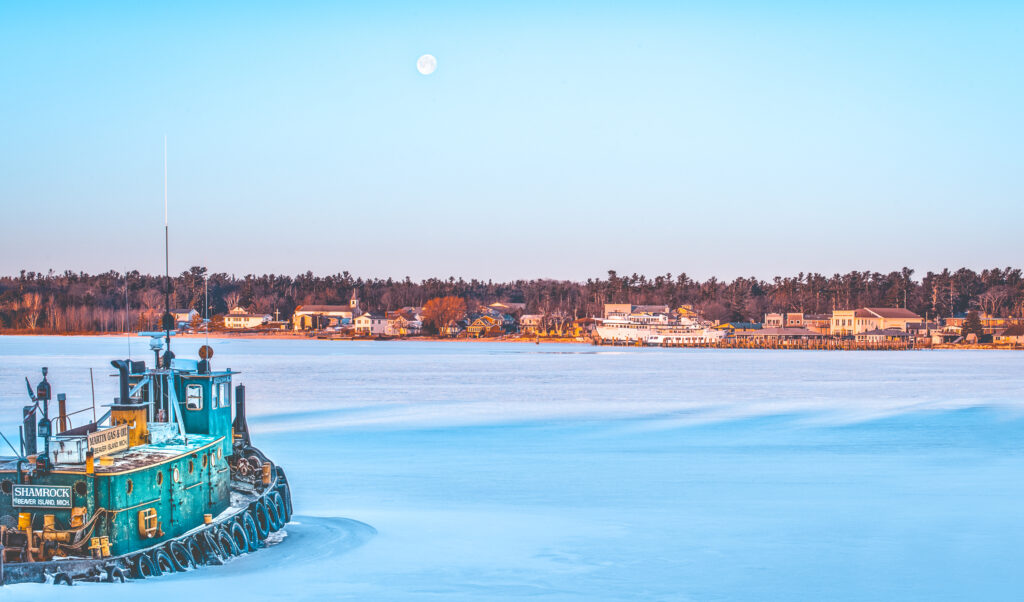
Let other people flock to Beaver Island’s white sand beaches, secluded forests, and scenic lighthouses in the summer, the busiest season for the tourist-friendly spot 32 miles off the coast in northeastern Lake Michigan. Pam Grassmick, one of the island’s 600 year-round residents, loves it there the most during the spring and fall, when the bucolic landscape is shaking off one season and welcoming another.
“I love to see the island awaken out of the snow. I love that time of year,” she said. “And the other time I really love it is the fall. We have a lot of maple trees and seven inland lakes, and you can really see the changing colors.”
Maybe it’s no coincidence that the transitional seasons are her favorites. Grassmick, 62, is a fourth-generation islander and grew up on a farm there. Her childhood memories are, in many ways, timeless. Just as her ancestors were, she was taught by the Dominican sisters whose mission was to come and educate the Beaver Island children, and non-school hours were filled with farm chores and fun. After Lake Michigan froze, the town’s plow truck would clear the snow off a portion of the harbor, and they would skate, sometimes making a cheerful bonfire on the ice to warm their hands and light the night.
“Those are some of my best childhood memories,” Grassmick said.
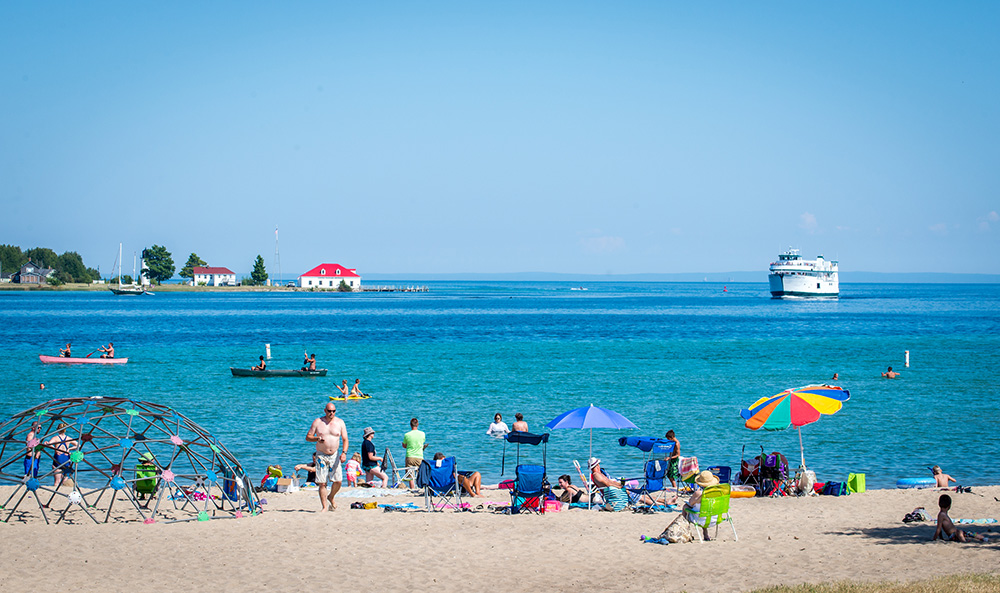
Still, she, like many of her classmates, left Beaver Island to try her luck on the mainland. She went to college, became a nurse and worked in Alaska and then Michigan. When she retired, Beaver Island pulled her and her husband back to live in the place she had always gone to recharge her batteries.
But she found the island had changed. It had prospered with an influx of people who built second, summer homes on it, and the increased property tax revenue allowed islanders to build a beautiful new school and a medical facility. But other changes seemed more ominous. Islanders were getting older, the school population was declining, and it seemed these two demographic realities were on a collision course that could not end well for the community’s long term viability.
Grassmick was getting worried. And so when she learned about a nascent effort to bring sometimes far-flung Great Lakes islanders together for collaboration and support on the issues that they are all facing, she wanted in. The Great Lakes Islands Initiative was inspired by the Maine Islands Coalition—a group that sends representatives of Maine’s 15 unbridged, year-round islands to quarterly meetings—but has quickly taken on a freshwater flavor all its own. There are 32,000 Great Lakes islands, with nearly 20 that have communities on them. All have their own character, traditions and geography, but many of the challenges they face are the same.
“At the heart of it is how to maintain a viable population,” Grassmick said. “The big thing is that we need to have people on these islands, and that’s what I really see in the coalition—islanders helping each other.”
MAINE CONNECTION
The idea for the initiative came about in part because one Michigan man had spent a number of childhood summers off the coast of Maine. Jon Allan, the director of the Michigan Office of the Great Lakes, spent some of his formative years participating in an ecology program on Hardwood Island in Blue Hill Bay. Because of that, he kept on paying attention to what was happening on the coast of Maine, and was aware of the work that the Island Institute was doing. And when, five years ago, he was hired to oversee a state-run department whose mission is to protect, restore, and sustain the Great Lakes watershed, he figured that some of what Maine was doing would translate well to Michigan. The Michigan office long had focused on environmental protection, water resource management, and the ecosystems of the lakes, but it seemed to Allan that something important was missing from the recipe: people.
“It dawned on me that our Great Lakes islands have a lot in common with Maine islands, and the work that the Island Institute was doing was so profound, so insightful and in tune with their communities. We wanted some of that, too. How can we start to help our communities in a meaningful way?”
So, a couple of years ago, his agency began to collect information about the islands to learn from the remaining communities. They started with Beaver Island and have expanded. Now, residents of 14 different islands are working together to share information, ideas, problems, and more. A couple of years ago, several islanders came to Maine to visit coastal island communities and attend a meeting of the Maine Islands Coalition. Grassmick, who was there, said that it was a rousing success.
“It was such a powerful meeting,” she said. “Seeing the islanders all helping each other and cheering when someone had six students in their school, and sharing their stories, those messages really resonated with the group that went.”
After that, Great Lakes islanders came together for a summit of their own last fall on Beaver Island, with some staff members from the Island Institute flying out to share their experiences in Maine. People came from different states, different lakes, and different islands, but they had more in common than they had expected. Discussion topics may sound familiar to Mainers, who are used to conversations about improving access to working waterfront, aging in place, infrastructure, attracting new people to the island and, of course, waste and recycling.
Great Lakes islanders now are planning a second summit, this one on Madeline Island in Lake Superior in Wisconsin. They also are having a monthly conference call. It feels exciting to Allan, who wants islanders, and not his office, to drive the direction of the initiative.
“First, islanders understand islanders. They understand both the beauty and the challenges of these hyper-rural communities,” he said. “And number two, my impression is that the value of a collective voice, at a time when it’s easy to dismiss small or individual voices, is really profound. You don’t lose identity, but you gain voice.”
He and others in his office also hope that a louder, collective voice will help island communities raise their profile among mainlanders, government agencies, and the general public, which are not generally aware of what is happening miles offshore and out of sight.
“Everybody knows Mackinac Island , but only because you go there in the summer and you ride the bikes, stay a couple days and then leave,” Matt Preisser, the Michigan lake coordinator for the Michigan Office of the Great Lakes said. “People don’t think, ‘Wow, there’s a school there, and what do they do in February?’ There’s a big awareness gap right now, and raising awareness is one of the longer term things this group can help do.”
Allan doesn’t want to study island communities as a locked-in-time oddity or a living museum, but instead as vibrant places full of people who are independent, resourceful, and resilient.
“While we spend a lot of time on fish and habitats and invasive species and other things, our island communities really are a profound reflection of Great Lakes culture,” he said. “I think it’s incumbent upon us to learn from them. Let’s focus on these remaining phenomenally cool places with phenomenally cool people. Not as museums. These are not museums in the Sturbridge Village way. These are living, breathing communities that change and morph with time.”
COMBATING ISOLATION WITH INIGENUITY
Compared to many small island communities, Beaver Island has a lot in the way of amenities. There are hotels, restaurants, a full-service grocery store, two small airlines, museums, and more. There’s even music festivals, a golf course, and an Irish pub. But despite all that, it’s safe to say that most residents like the quiet, unspoiled nature of their island. Birders from all over come to spot the pelicans, piping plovers, and other bird species that flock there. Spring brings an explosion of wildflowers and summer lots of opportunity for swimming, hiking and other outdoor adventures.
“Beaver Island is quite active and beautiful. It’s still very wooded. There’s lots of wild deer and turkey and foxes—all kinds of cool things,” Dennis Winslow, a part-time island resident since 2000, said. “It really is an interesting little place. A lot of people don’t know the history, and a lot of people don’t know how beautiful it is.”
But the winters can challenge even the hardiest island dwellers. The ferries stop running when the lakes freeze up and islanders rely on airplanes to get back and forth from the mainland. If bad weather makes it unsafe to fly, people can be stuck for days on one side or the other (hard, though still easier than in the old days before planes, when islanders crossed the ice on foot or wagon on a trail marked by Christmas trees and hoped for the best. One year, the story went, a postal horse, wagon, and mailman got lost when the ice was too thin and they broke through to the lake).
A few years ago, Winslow and a couple other full and part-time islanders decided that one thing that could decrease the isolation and be good for the community would be a low-power FM radio station. In 2013, the Federal Communications Commission opened a window for new license applications, and the three Beaver islanders—old radio hands all—thought that a low-power station would be a perfect fit.
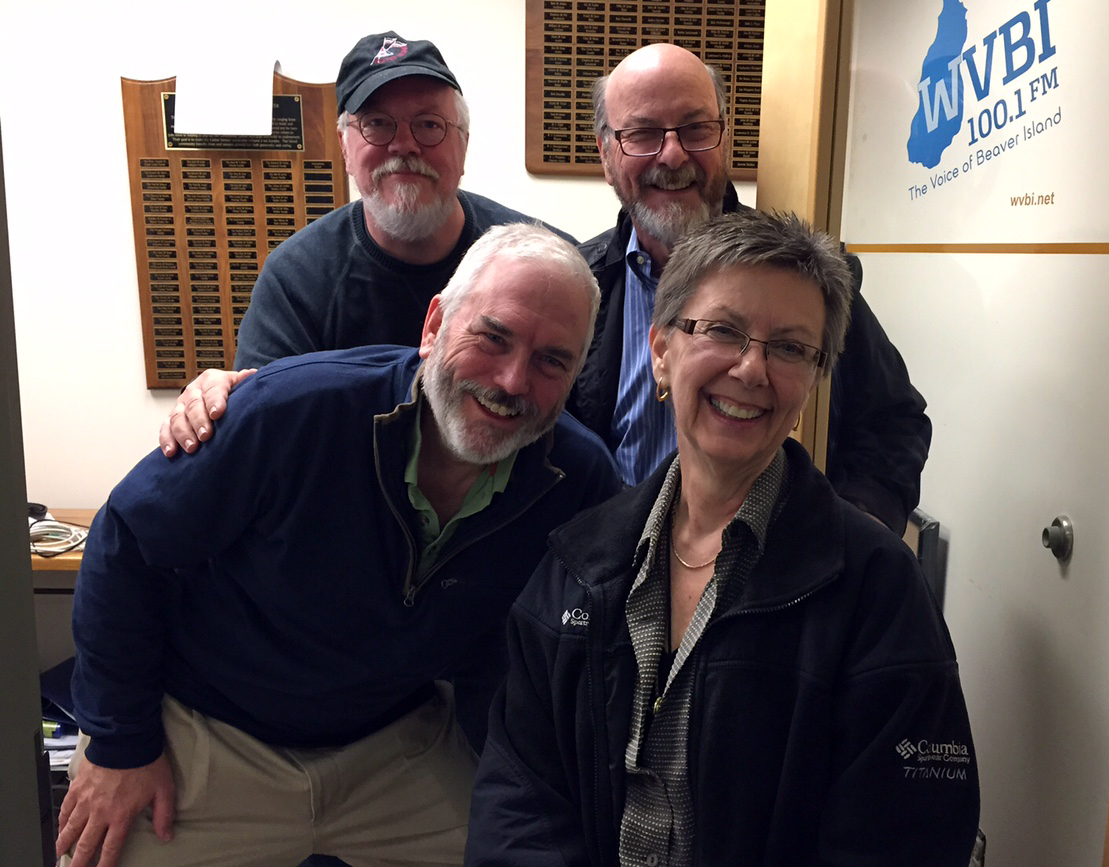
“The vision was for the radio station to be a way for the islanders to communicate and feel connected, especially during the winter,” Winslow said.
It took some work, persuasion, and a lot of help, but WVBI-FM began broadcasting about a year and a half ago. The independent, non-profit, community run radio station is broadcast from a studio in the Beaver Island Community Center, at the heart of the island.
So far, locally produced shows feature oldies, jazz, classic country, Celtic, and “Cottage Mix,” a kind of lucky dip that can leave a listener bopping to Elton John one minute and local artists the next. The station also covers community meetings, updates the community calendar regularly, has broadcast locally-produced radio plays, and even recorded and broadcast the memorial service for a longtime, well-loved islander.
Listeners who live within ten miles or so of the broadcast tower can tune in on their radios. But anyone, anywhere can listen to it online, and that helps the summer residents stay connected to the island, too.
“The station really has helped, I think, provide the island with its own voice,” Mark Beltaire, one of the radio guys who got WBVI going, said from his winter home in Detroit.
Then he paused. Beaver Island is a place full of unique, eccentric people, he said, and one of the things they have in common is a deep love of where they live. That reminded him of another radio station—albeit a fictional one—that also brought the people of a rural community together.
“People ask what does Beaver Island look like,” he said. “I explain it’s just like that old television show, Northern Exposure, only without the moose.”
King Strang’s Island
Among those thousands of freshwater islands in the Great Lakes, Beaver Island really does stand out. At 55 square miles and a two-hour ferry ride from the mainland, it’s the largest island in Lake Michigan, and also surely the only island that once was home to a Mormon kingdom ruled by a self-appointed king.
The island originally was settled by prehistoric Mound Builder Indians, then Chippewa and Ojibways followed by traders and trappers. But “King Strang,” arguably its most colorful resident, arrived on its shores in 1848. James Jesse Strang was a lawyer in the Wisconsin Territory who converted to Mormonism shortly before Joseph Smith, the founder of the faith, died at the hands of an angry mob in Carthage, Illinois. After Smith was killed, several people scrambled to succeed him as leader of the church. One was Brigham Young, who took his followers to Salt Lake City. But another was Strang, who brought his followers to Wisconsin and then to Beaver Island, at that time a sleepy fishing village.
Strang, who declared himself king in an 1850 ceremony that featured a cardboard crown, had his followers build roads, clear land for farming, and sell wood to passing ships. He came out as a polygamist, ultimately marrying five wives. Things seemed good in his kingdom. And yet there was a looming shadow—faraway American government officials, who didn’t cotton to the idea of part of the country being turned into a religious monarchy.
The same year as Strang’s coronation, he was arrested and accused of treason, and was taken to Detroit by navy ship to stand trial along with some of his men. The trial went well for Strang, who defended himself skillfully and was acquitted. He and his men returned home to their island, and Strang ran for a seat in the Michigan Legislature and won.
But the shadow hadn’t really gone away. Other, non-Mormon islanders remained suspicious and resentful of Strang, his followers, and his religion. In 1856 he was shot in the back and head by two men who were never charged with a crime, and he died a few weeks later of his injuries. The end of the Mormon kingdom came quickly after his assassination. Most of his followers left of their own accord or were driven off the island by a mob from nearby Mackinac Island, which also burned Mormon homes and the Tabernacle.
The next wave of settlers were the Irish, who took advantage of the rich fishing grounds that surrounded Beaver Island and the peaceful isolation on it. By the mid-1880s, the island was the biggest supplier of freshwater fish consumed in the United States, and church services and regular conversations were being conducted in Gaelic. But change, a constant on Beaver Island, struck again. Overfishing and technological changes brought the fishing heyday to an end by the beginning of the 20th century, and logging and then tourism filled the void it left.

